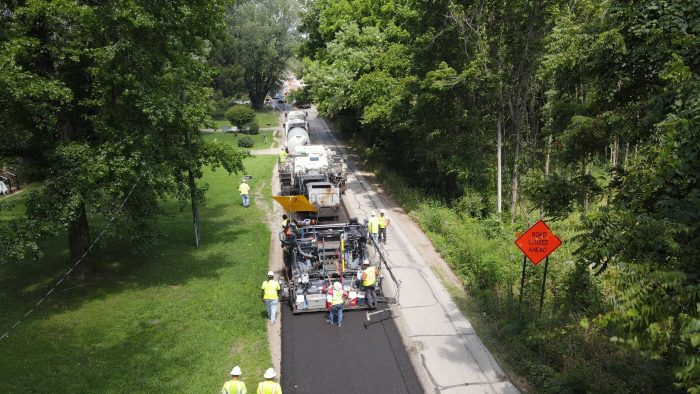24
Feb 24th, 2025

Have you read Part 1? Find out how modern roadbuilding emerged in America. From the accidental discovery of asphalt for roads to The Interstate Decade, get up to speed on asphalt history. Read Here
By the late 1960s, road contractors started experimenting with asphalt recycling. One of the pioneers, Robert Mendenhall of Las Vegas Paving Company, developed a method to mix reclaimed pavement with a proprietary rejuvenating agent. Around the same time, milling machines—originally designed for small scale maintenance—were repurposed for full-scale recycling.
In the 1970s and 1980s, manufacturers improved recycling equipment, but state departments of transportation (DOTs) needed convincing that reclaimed asphalt pavement (RAP) could perform as well as traditional mixes. After years of research and collaboration among federal and state agencies, industry associations and academia, RAP became a standard component in new hot mix asphalt (HMA).
As highway traffic increased, the asphalt industry needed stronger, longer-lasting pavements. In response, the National Asphalt Pavement Association (NAPA) spearheaded efforts to fund a dedicated research center.
The National Center for Asphalt Technology (NCAT) was established in 1986, providing the industry with a cutting-edge laboratory. A full-scale test track followed in 1998, allowing researchers to simulate decades of wear in just a few years.
New innovations quickly emerged. In 1990, the Strategic Highway Research Program (SHRP) led to the creation of Superpave® (SUperior PERforming asphalt PAVEment)—the first major overhaul of mix design in 50 years. Around the same time, stone-matrix asphalt (SMA) emerged from Germany, improving rutting resistance with a stronger stone-on-stone structure.
Throughout this era of innovation, engineers noticed a trend: well-designed asphalt roads were outlasting expectations. They coined the term Perpetual Pavement to describe structures where only the top layer wears down, while the base remains intact.
Because asphalt is flexible—unlike rigid concrete—it can resist deep structural damage. When the surface layer needs rehabilitation, it can simply be milled and overlaid, extending pavement life indefinitely.
As asphalt’s longevity became clearer, the industry shifted from a “build and replace” mentality to proactive maintenance. Pavement preservation focuses on preventative maintenance and minor rehabilitation to maximize a road’s service life. The key is timing—applying treatments when a pavement is still in good condition rather than waiting until costly reconstruction is required.
Over the last 20 years, advancements in preservation materials, equipment and construction methods have reshaped the industry. The adoption of automation, quality control systems, polymer-modified asphalt and more have led to longer-lasting pavements. Now, the focus is transforming pavement management into a sustainable effort in terms of cost, time, materials and environmental impact.
Techniques such as crack sealing, slurry or micro surfacing, chip sealing (oil and chip) and fog sealing have become standard practice to prevent minor issues from escalating. Even earlier on in the pavement’s life, penetrating emulsions and void reducing asphalt membranes (VRAM) can extend the service life of asphalt, saving life-cycle costs.
Sustainability has also become a major focus. Warm mix asphalt, produced at 80-100°F lower than traditional hot mix, has gained traction for its ability to reduce emissions, energy consumption and wear on equipment. NAPA reported, in 2021, 41% of U.S.-produced asphalt pavement was warm-mix asphalt.
This shift to cooler temperatures has led to the innovation of cold recycling techniques like Cold Central Plant Recycling (CCPR) and Cold In-Place Recycling (CIR) and even the development of Cold Constructed Asphalt Pavement (CCAP), a gelled asphalt binder. These techniques offer cost-effective, environmentally friendly alternatives for rehabilitating roads.

CIR Paving Train
From the early days of McAdam to today, the asphalt paving industry has witnessed significant advancements. As road managers work to balance the old with the new, proactive maintenance is crucial to extending pavement life and reducing costly reconstructions.
Moving forward, technology will continue to shape the industry:
As innovation drives progress, the asphalt industry will undoubtedly remain committed to building safer, longer-lasting roads for future generations.
Eager for more resources on pavement preservation planning?
Start here with the Pavement Preservation & Recycling Alliance’s quick introduction and self-service tools or connect with our team today to start the conversation.
Editor’s Note:
Information sourced from “Paving the Way: Asphalt in America” by Dan McNichol